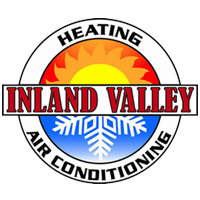Overview: Do you ever really think about the silent influencer behind your HVAC system’s performance? The unsung hero that shapes your HVAC’s efficiency is ductwork . Let’s learn more about it!
Though often overlooked in its importance to an HVAC system, your ductwork design matters. When we think of heating, ventilation, and air conditioning (HVAC) systems, we often focus on the high-tech and visible equipment that keeps our homes comfortable. However, there’s a crucial component hidden behind the walls and ceilings that plays a significant role in your HVAC system’s efficiency: ductwork.
The design and installation of your ductwork can greatly impact the overall performance and energy efficiency of your HVAC system. In this blog post, we’ll look into ductwork design and explore how it affects your HVAC efficiency.
The Basics of Ductwork
Ductwork refers to the network of channels, pipes, and vents that transport conditioned air throughout your home. This system plays a pivotal role in distributing heated or cooled air from your furnace, heat pump, or air conditioner to every room, ensuring a consistent and comfortable indoor environment.
The primary components of a ductwork system include supply ducts, which carry conditioned air into your living spaces, and return ducts, which transport air back to the HVAC equipment for reconditioning.
>> Related Reading: How Does Residential Ductwork Work? A Homeowner’s Guide
How Ductwork Design Impacts Efficiency
Airflow Efficiency: Proper airflow is essential for an efficient HVAC system. Ducts should be appropriately sized to ensure the right amount of air reaches each room. If ducts are too small, the system works harder to push air through, leading to increased energy consumption. Conversely, oversized ducts can result in reduced airflow, making your HVAC system less effective.
Air Leakage: Poorly designed or maintained ductwork can develop leaks and gaps, causing conditioned air to escape into unconditioned spaces like attics or crawl spaces. This results in energy wastage and reduced system efficiency. Sealing and insulating ducts is critical to prevent these losses.
Ductwork Layout: The layout of your ductwork matters. A convoluted, meandering design with excessive twists and turns can restrict airflow and make your HVAC system work harder to distribute air. A well-planned, straighter layout minimizes resistance and helps maintain efficiency!
Balanced Airflow: To maintain comfort and efficiency, it’s crucial to balance airflow throughout your home. This ensures that rooms receive the right amount of conditioned air, preventing hot and cold spots. A professional HVAC technician can use dampers and other methods to balance airflow.
Return Air Placement: The placement of return air vents is equally important. If they are located in the wrong areas, your HVAC system might pull in hot or cold air from undesirable sources, forcing it to work harder to reach the desired temperature.
Insulation and Sealing: Proper insulation and sealing of ducts prevent heat gain or loss, reducing the workload on your HVAC system. Leaky ducts can also introduce contaminants, affecting indoor air quality and the efficiency of air filters.
>> Here’s a quick guide on: How Does Ductwork Affects Overall System Efficiency?
Importance of Proper Installation
Proper installation of your home’s ductwork is just as important as its design. An HVAC system may have an ideal ductwork design, but if it is not installed correctly, efficiency can be compromised. Key considerations during installation include:
Sealing and Insulation: Ducts should be properly sealed and insulated on the day they’re installed. If they’re not, they could begin to leak immediately, which can bring a variety of problems and necessitate extensive repairs or re-installation. It’s better to make sure the ducts are sealed right the first time.
Proper Sizing: Ducts should be sized accurately to match the capacity of the HVAC system. Incorrect sizing can lead to inefficiency and reduced comfort.
Professional Installation: A skilled HVAC technician should handle ductwork installation to ensure it is done correctly. This includes securing connections, insulating properly, and verifying that the system operates as intended.
What Are Some Signs of Ductwork Issues?
It’s essential to be aware of signs that indicate ductwork issues, as they can compromise the efficiency of your HVAC system.
These signs include:
Inconsistent Temperatures: If some rooms in your home are too hot or too cold, it may be due to improperly designed or installed ductwork.
Increased Energy Bills: A sudden spike in your energy bills can indicate that your HVAC system is working harder than necessary due to ductwork problems.
Unusual Sounds: Hissing or rattling noises coming from the ducts could indicate leaks or blockages.
Poor Air Quality: Ductwork issues can introduce contaminants, leading to decreased indoor air quality and potential health concerns.
Visible Damage: Inspect your ducts for visible damage or gaps, especially in accessible areas like basements or crawl spaces.
>> Related Reading: 5 Common Signs of HVAC Ductwork Problems
In Summary
Ductwork may be hidden from view, but it’s a critical component of your HVAC system that profoundly affects its efficiency. Proper ductwork design, sizing, sealing, and insulation are essential for a comfortable and energy-efficient home. Neglecting this aspect of your HVAC system can lead to higher energy bills, decreased comfort, and unnecessary wear and tear on your equipment.
If you’re concerned about your HVAC system’s performance, it’s a wise investment to have a professional HVAC technician evaluate your ductwork and make any necessary adjustments or improvements.
Do you have ductwork questions or concerns, or do you need some new ductwork installed? Drop us a line — we’ll provide you with some dazzling ductwork!

